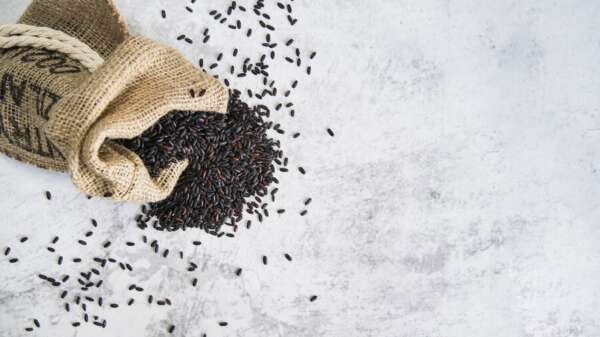Bhumi Amla (Phyllanthus niruri / Chanca Piedra) – The Stone Breaker Herb
Introduction
Part 1:
If you’ve ever wandered through the lush green corners of India’s countryside during the monsoon, you might have stumbled upon a small, delicate herb growing close to the ground, with tiny leaves arranged like feathers on a stem. This is Bhumi Amla (Phyllanthus niruri), also famously called Chanca Piedra, meaning “stone breaker” in Spanish. Native to tropical regions of India, South America, and Southeast Asia, Bhumi Amla has been cherished for centuries in both Ayurveda and Latin American folk medicine. Despite its humble appearance, this plant has built a powerful reputation as a natural healer.
Part 2:
Why should we care about Bhumi Amla today? The answer lies in its impressive medicinal profile. Traditionally used for liver health, kidney stones, and digestive balance, it’s now being rediscovered by modern researchers for its antiviral, anti-inflammatory, and hepatoprotective properties. With the rise of lifestyle-related health issues, people are turning back to nature’s remedies, and Bhumi Amla is shining as a safe, accessible, and effective herb. Whether you call it Bhumi Amla, Chanca Piedra, or the stone breaker, its story is worth knowing.
7 Best Alternatives to Bhumi Amla
While Bhumi Amla is powerful, nature offers several similar herbs with overlapping benefits. Here are seven popular alternatives:
1. Kalmegh (Andrographis paniculata) – India & Southeast Asia
Kalmegh, often called the “King of Bitters,” is widely used in Ayurveda for its strong detoxifying properties. Found in India, Thailand, and Malaysia, it is renowned for boosting immunity, supporting liver health, and fighting infections. Much like Bhumi Amla, it is often used in cases of jaundice and fever.
2. Guduchi (Tinospora cordifolia) – India
Known as Amrita or the “root of immortality,” Guduchi is a climbing shrub that supports immunity and helps the body fight stress. Traditionally cultivated across India, Guduchi is especially valued for chronic fever, liver disorders, and general debility.
3. Punarnava (Boerhavia diffusa) – India & Africa
Punarnava means “renewed again,” and the herb truly lives up to its name by rejuvenating the body. Found in tropical India and parts of Africa, it is particularly effective for kidney and urinary tract health, making it a strong ally alongside or in place of Bhumi Amla.
4. Dandelion Root (Taraxacum officinale) – Europe & North America
A common weed in Europe and North America, dandelion root is a traditional liver tonic. It supports bile production, aids digestion, and helps detoxify the liver. Western herbalists often recommend it as a substitute for Bhumi Amla for liver and gallbladder health.
5. Milk Thistle (Silybum marianum) – Mediterranean & Western Countries
Milk thistle, native to the Mediterranean region, is one of the most well-researched herbs for liver health. Its active compound, silymarin, protects liver cells from toxins. In modern herbal medicine, it’s often considered the Western counterpart to Bhumi Amla.
6. Aloe Vera (Aloe barbadensis) – Global Cultivation
Aloe Vera needs no introduction. While best known for skin benefits, its inner gel is also used for digestive and liver health. Cultivated worldwide, especially in warm regions, it acts as a soothing, detoxifying herb, much like Bhumi Amla.
7. Neem (Azadirachta indica) – India
Neem, called the “village pharmacy,” is widely available across India. It purifies the blood, strengthens immunity, and has strong antiviral and antibacterial properties. In Ayurveda, neem often complements or substitutes Bhumi Amla in treatments for skin, liver, and digestive issues.
When and Where
To understand Bhumi Amla, we must first step into the rhythm of nature where it thrives. This herb typically grows abundantly during the monsoon season in India, sprouting on damp soil, roadsides, and in wild fields. Farmers and herbalists often gather it when the plant is lush and green, as this is when it contains the highest concentration of medicinal compounds.
Geographically, Bhumi Amla is native to tropical and subtropical regions. It grows in India, Sri Lanka, Southeast Asia, South America, and even Africa. In the Amazon rainforest, locals call it Chanca Piedra and use it as a remedy for kidney stones. In India, Ayurvedic practitioners have used it for thousands of years as a liver tonic and digestive healer.
Traditionally, sourcing Bhumi Amla was simple – people collected it fresh from the wild. Today, it is cultivated on a larger scale for use in Ayurvedic pharmacies, where it is dried, powdered, or processed into tablets and syrups. The plant has several close relatives within the Phyllanthus genus, such as Phyllanthus amarus and Phyllanthus fraternus, which are also used in herbal medicine.
The story of Bhumi Amla is thus both ancient and modern – rooted in local traditions yet spreading globally as scientific validation catches up with folk wisdom.
Who Uses Bhumi Amla?
Bhumi Amla’s use spans continents and cultures. In Ayurveda, it is prescribed for liver disorders, indigestion, and urinary problems. Traditional healers in rural India often prepare it as a decoction for jaundice. In Siddha and Unani medicine, it is recommended for balancing pitta and treating gallbladder stones.
Beyond India, South American shamans and folk healers have long relied on Chanca Piedra to “break stones,” referring to kidney and gallstones. In Africa, the herb is used for malaria, while in Southeast Asia, it is valued for supporting overall vitality.
Today, naturopaths, herbalists, and even wellness enthusiasts across the world use Bhumi Amla in capsules, teas, and tinctures as part of their daily routines for detox, liver protection, and kidney care.
Why Use Bhumi Amla?
So, why do people keep turning to Bhumi Amla? The answer lies in its wide spectrum of benefits:
- Liver Health: It protects and regenerates liver cells, making it a frontline remedy for jaundice, fatty liver, and hepatitis.
- Kidney Stones: Its nickname, “stone breaker,” comes from its ability to dissolve or reduce kidney and gallstones.
- Digestive Health: It soothes indigestion, acidity, and improves appetite.
- Antiviral Properties: Studies suggest it has activity against hepatitis B and other viral infections.
- Anti-inflammatory & Antioxidant: It combats free radicals and reduces inflammation, supporting long-term health.
For many, Bhumi Amla isn’t just a herb but a lifeline—a natural, gentle, and effective way to restore balance in the body.
Which Parts of Bhumi Amla Are Used?
Every part of Bhumi Amla has something to offer, but the whole plant is generally used in medicine.
- Leaves: Fresh leaves are often crushed into juice for jaundice and liver problems.
- Stems & Roots: Decoctions of stems and roots are given for kidney stones and digestive complaints.
- Seeds: Sometimes used in traditional remedies for urinary and reproductive health.
This “all parts useful” nature makes Bhumi Amla a versatile herb, much like neem or tulsi.
How to Use Bhumi Amla?
The beauty of Bhumi Amla lies in its adaptability. Traditionally, people use it in simple home remedies, while modern herbal companies have refined its forms.
- Juice (Swarasa): Fresh leaf juice, often mixed with honey, is a classic remedy for jaundice.
- Powder (Churna): Dried plant powder can be taken with warm water for liver and kidney support.
- Tea/Infusion: Boiling the herb in water makes a detox tea.
- Capsules/Tablets: Convenient for daily supplementation.
- Extracts: Used in modern herbal formulations for stronger therapeutic effects.
Precaution: While generally safe, overuse may lower blood sugar or interact with medications. Pregnant or breastfeeding women should consult a doctor before use.
Important Facts About Bhumi Amla
- Botanical Name: Phyllanthus niruri
- Family: Phyllanthaceae
- Active Compounds: Phyllanthin, hypophyllanthin, flavonoids, alkaloids
- Scientific Studies: Research supports its antiviral effects, especially against hepatitis B, and its stone-dissolving properties.
- Potential Side Effects: May cause mild dizziness or low blood sugar in some people; best used under guidance if on medication.
FAQs on Bhumi Amla
1. Is Bhumi Amla safe to use?
Yes, when used in recommended doses. However, consult a doctor if you are pregnant, breastfeeding, or on medication.
2. Can it help with kidney stones?
Yes, traditionally it is known as “stone breaker” for its ability to dissolve or prevent kidney and gallstones.
3. Where can I buy Bhumi Amla?
It is available in Ayurvedic shops, herbal pharmacies, and online stores in forms like powder, capsules, and juice.
4. How fast does it show effects?
For liver support, benefits are often noticed within 1–2 weeks. For kidney stones, it may take longer depending on the case.
5. Does it have antiviral properties?
Yes, studies suggest it may help manage hepatitis B and other viral infections.
6. Can it lower blood sugar?
Yes, it may reduce blood sugar levels, so diabetic patients should monitor closely.
Conclusion
Bhumi Amla (Phyllanthus niruri / Chanca Piedra) is a small plant with a big story. From ancient Ayurvedic healers in India to Amazonian shamans in South America, cultures across the world have trusted this humble herb to heal the liver, dissolve kidney stones, and restore balance in the body.
Today, as modern science confirms its age-old uses, Bhumi Amla stands as a bridge between traditional wisdom and modern wellness. Whether you sip it as tea, take it as a supplement, or use its fresh juice, it reminds us of nature’s quiet yet profound power.
In a world where we often look for complex solutions, Bhumi Amla offers something beautifully simple: healing that grows from the ground beneath our feet.


